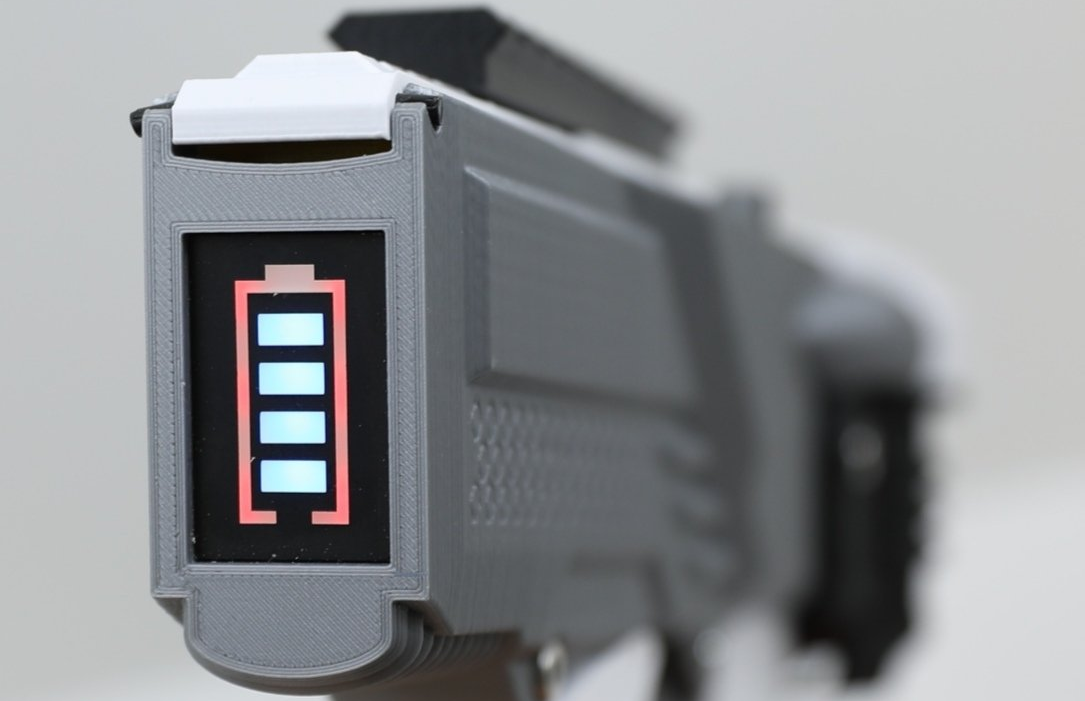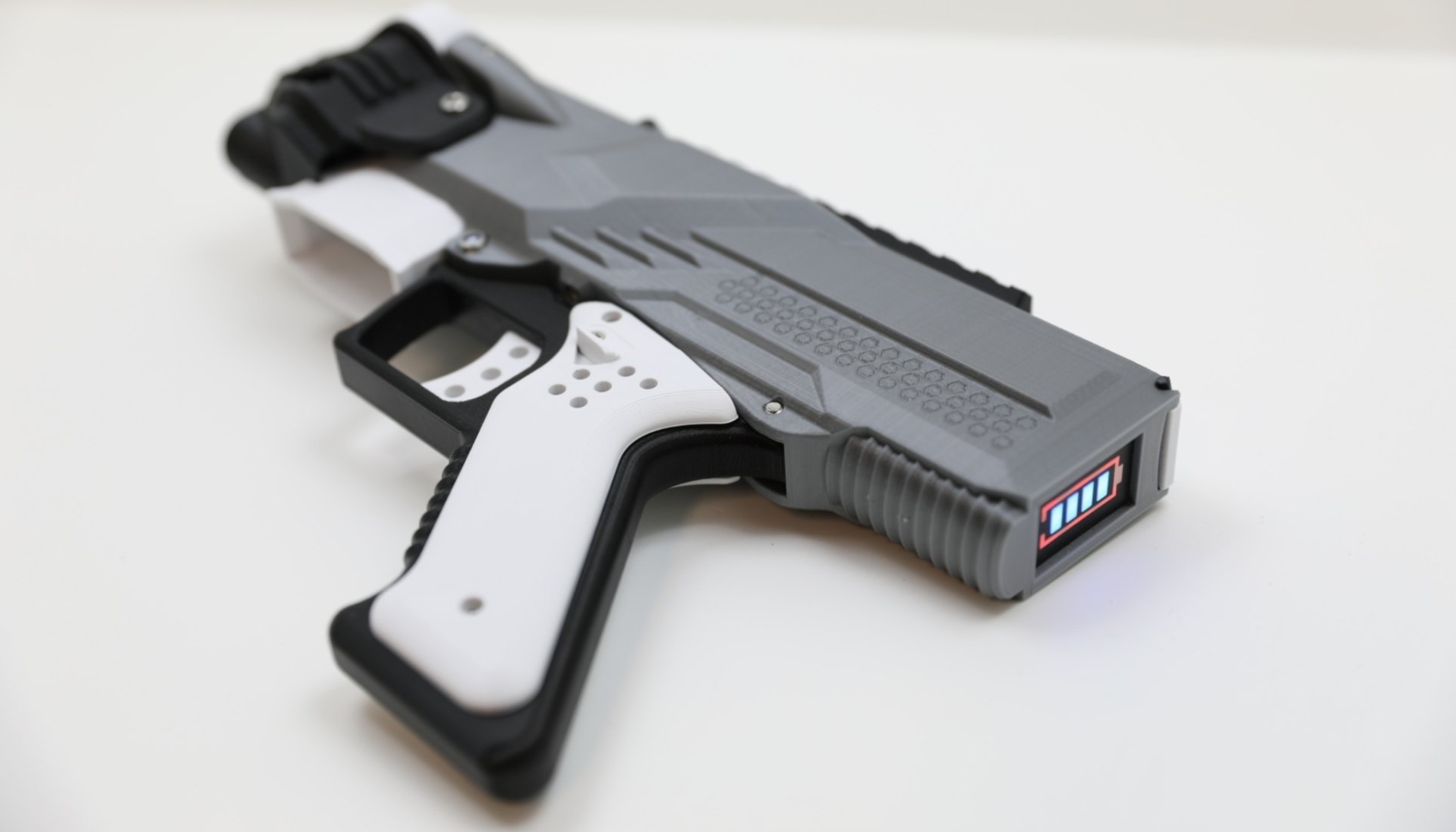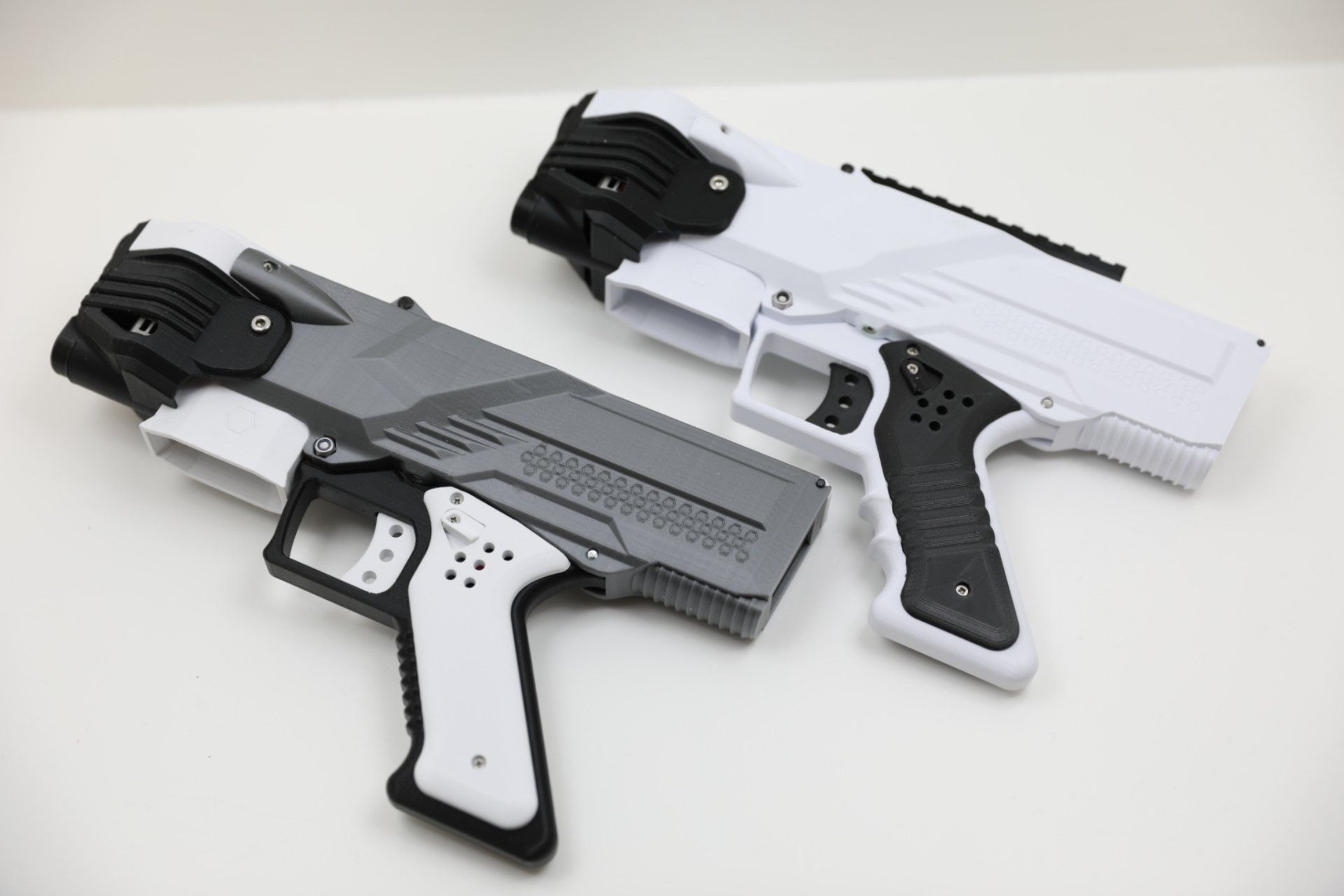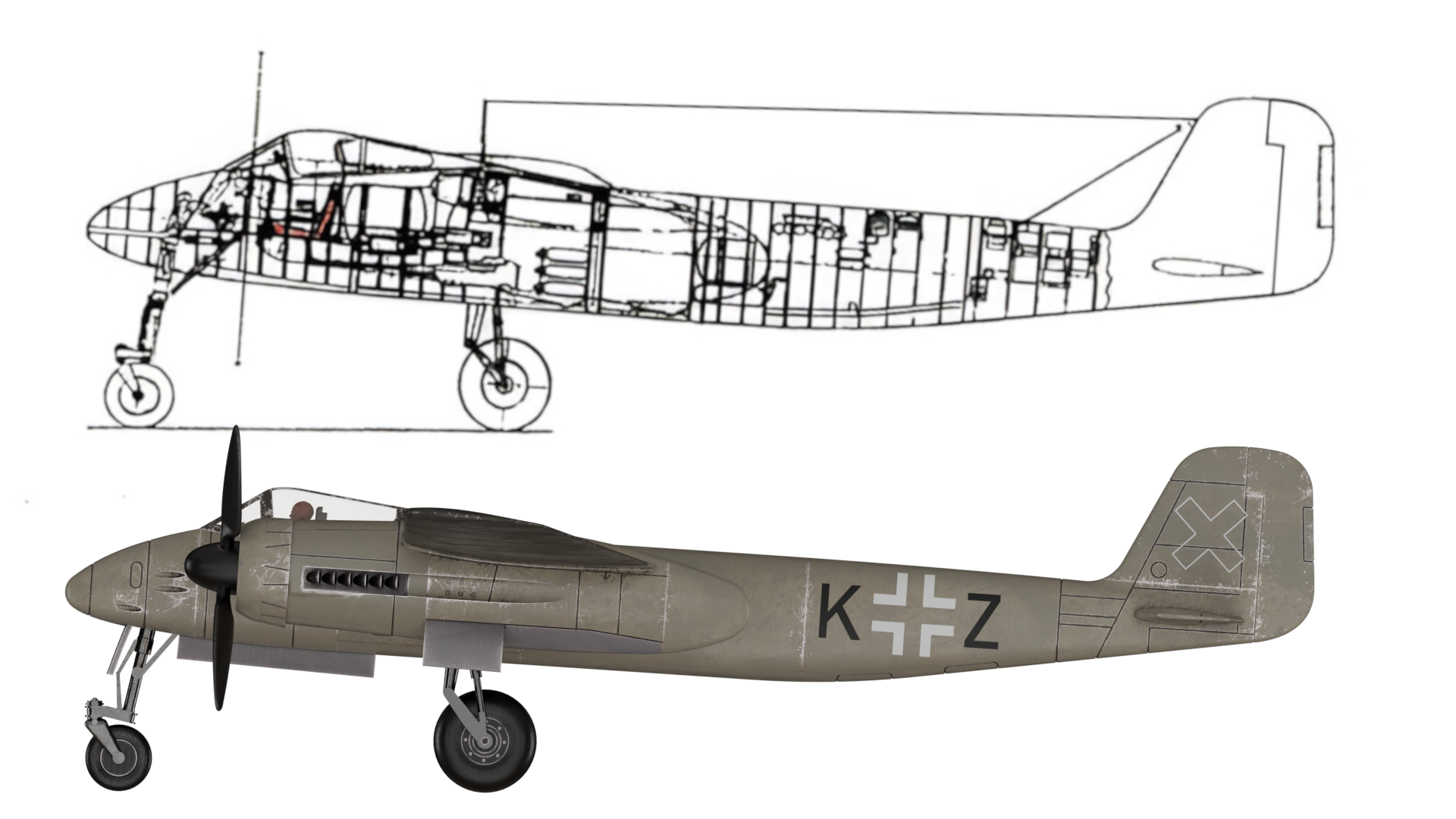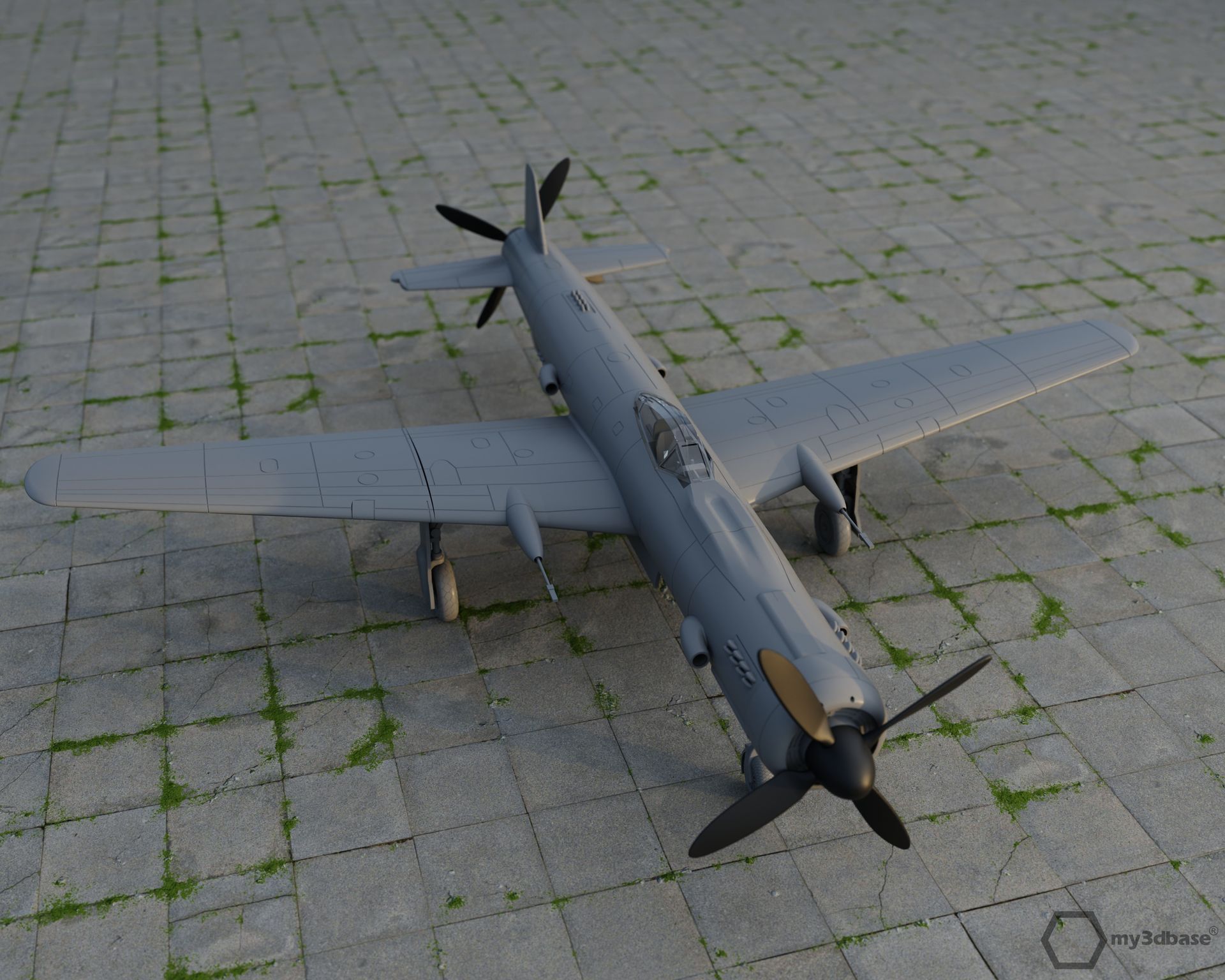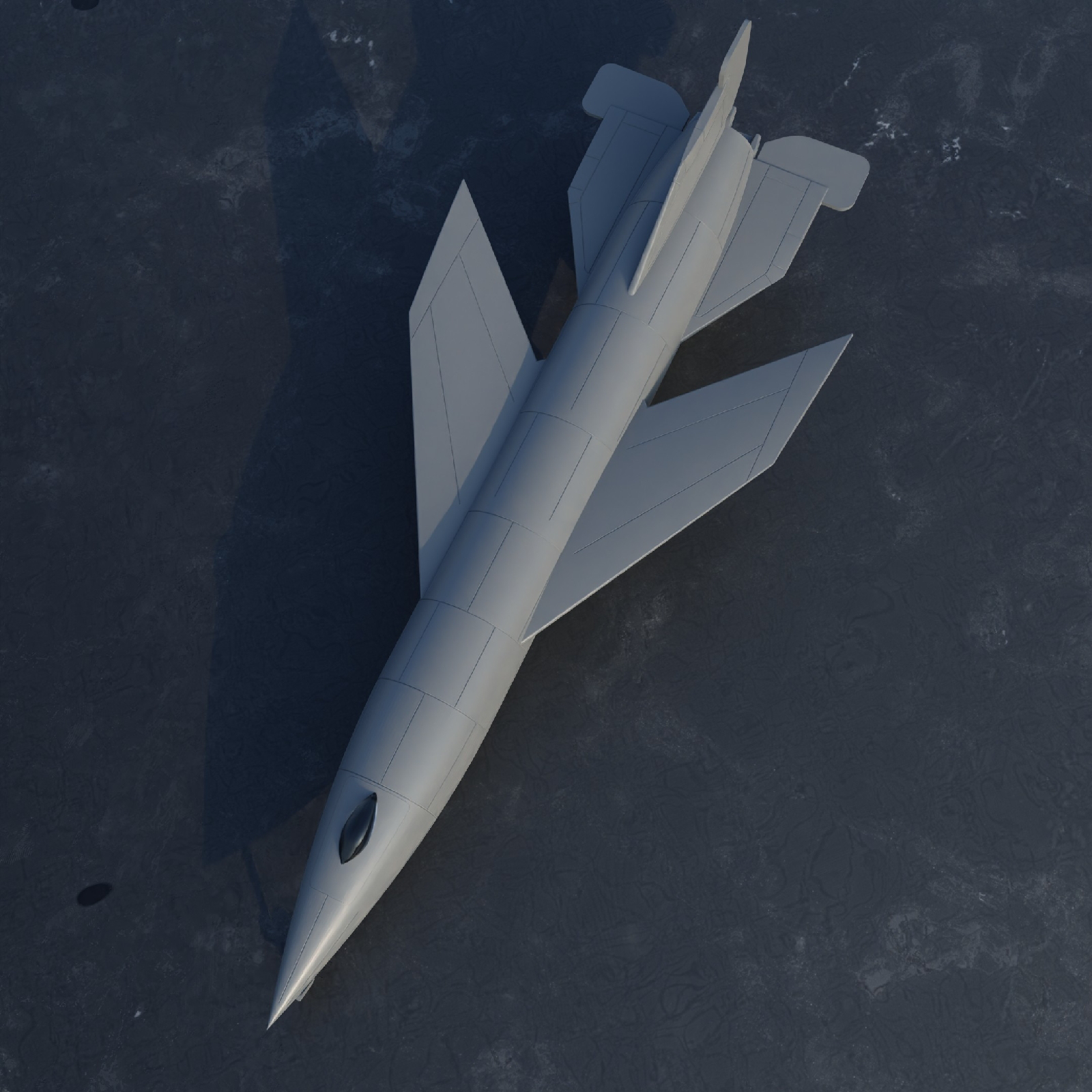The full auto NG-2; the PATHFINDER
The PATHFINDER is essentially based on the standard NG-2. But it features a full auto mechanism, voltage indicator and safety catch. Max fps is 130, the rate of fire is approximately 900darts/min.
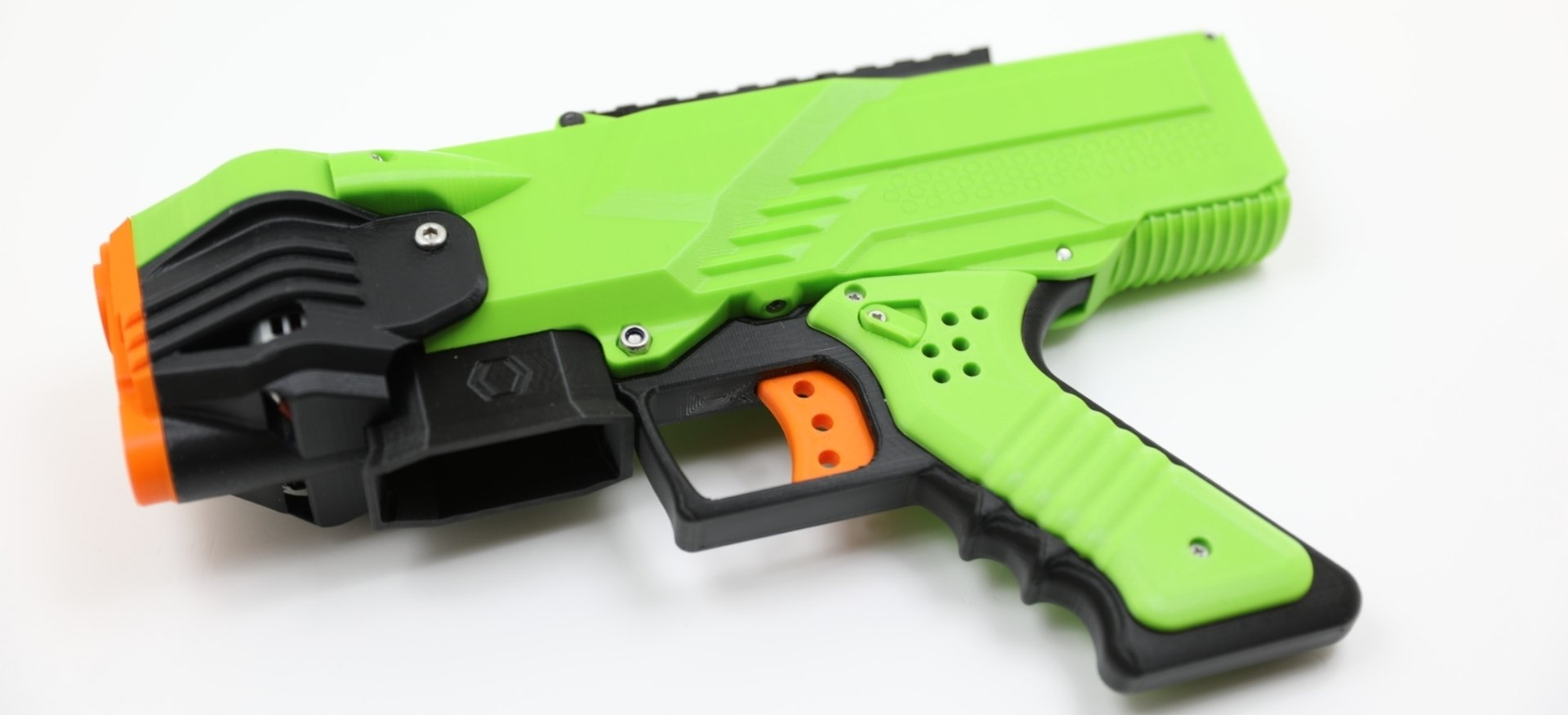
The safety catch is a mechanical lock, that keeps you form accidentally freiring the blaster. It is ambidextrous, hence available from both sides.
The voltage indicator is house in the main body and well visible from the rear.
The overall profile has been kept very slim, size is minimal. Performance is on par with the NG-2 with a max 130fps. Again you will find a cage that is completely printed in ABS to endure the potential heat from the motors. This is also true for the pushed mechanism which is printed in solid ABS. The pusher is powered by a gear box with metal gears.
As with most of our designs, you are able to choose your own color combinations.

Bringing the Heinkel P.1068 to Life For aviation history enthusiasts and model builders, the Heinkel P.1068 is one of the lesser-known yet highly intriguing Luft ’46 aircraft concepts. Originally developed as a twin-engine competitor to the Arado Ar 234 , it evolved into a more advanced bomber featuring up to six engines. Though the He 343 project was ultimately canceled, the P.1068 survived in a different form—as a test aircraft built in collaboration with DFS (Deutsche Forschungsanstalt für Segelflug) . Now, you can bring this advanced jet bomber concept to life with our latest Heinkel P.1068-01 model kit , available exclusively at My3DBase .
Damit Eure Kekse mit unseren Backförmchen so richtig gut funktionieren haben wir für euch ein paar Tips zusammengestellt. Vorab einmal das Rezept: 100 g Butter 50 g Puderzucker (kann dem eigenen Geschmack angepasst werden) 30 g Ei 200 g Mehl Die Mengen können unter Einhaltung des Mischungsverhältnisses erhöht werden. Zunächst wird der Puderzucker mit der Butter vermengt. Danach wir das Ei hinzugegeben. Anschließend wird das Mehl untergehoben. Wichtig: Damit der Teig die richtige Konsistenz erhält sollte er gekühlt werden; ca 30min im Gefrierfach oder 1-2 Stunden im Kühlschrank.




